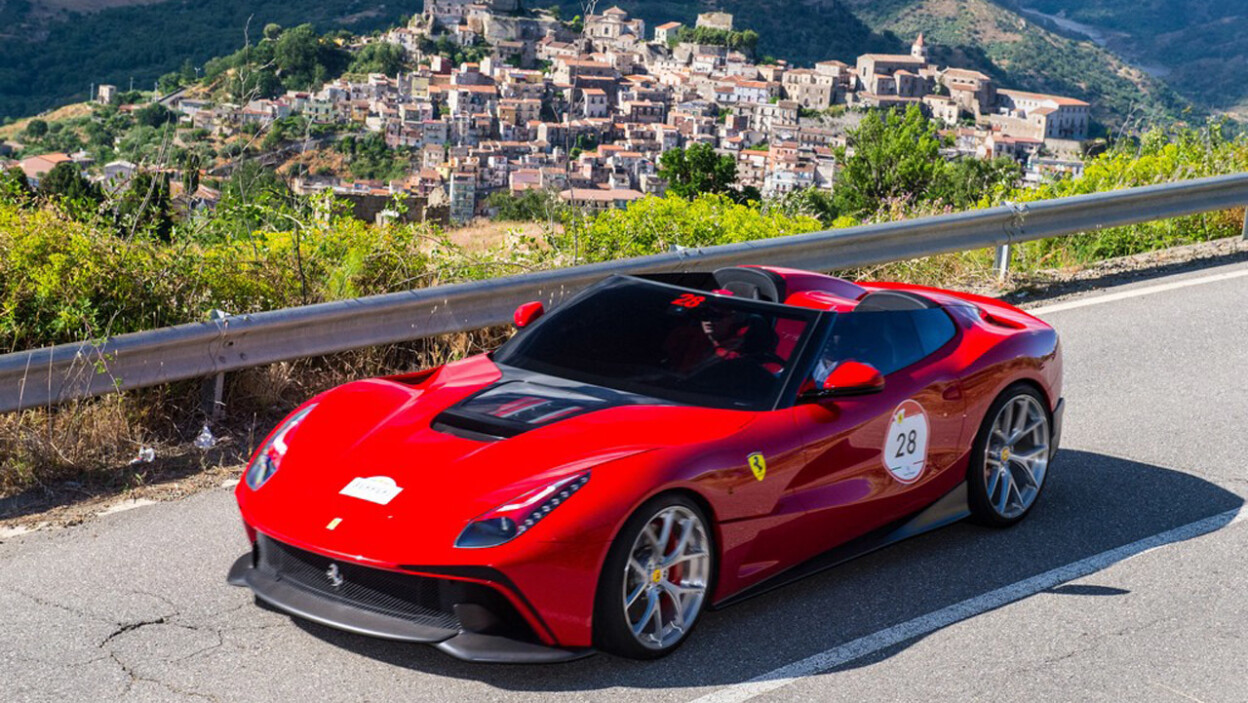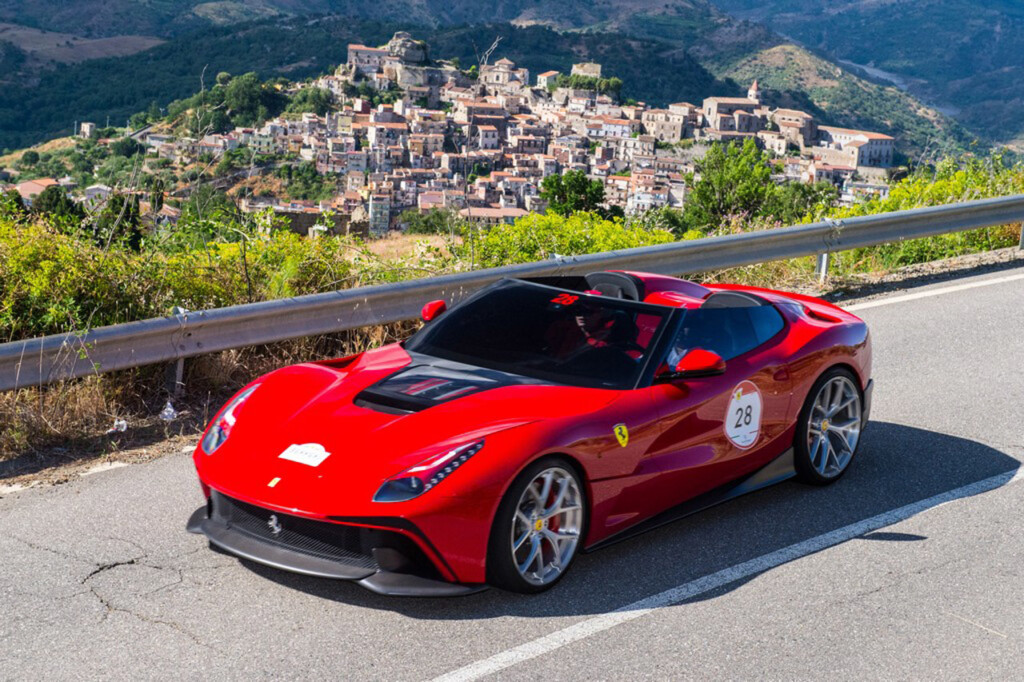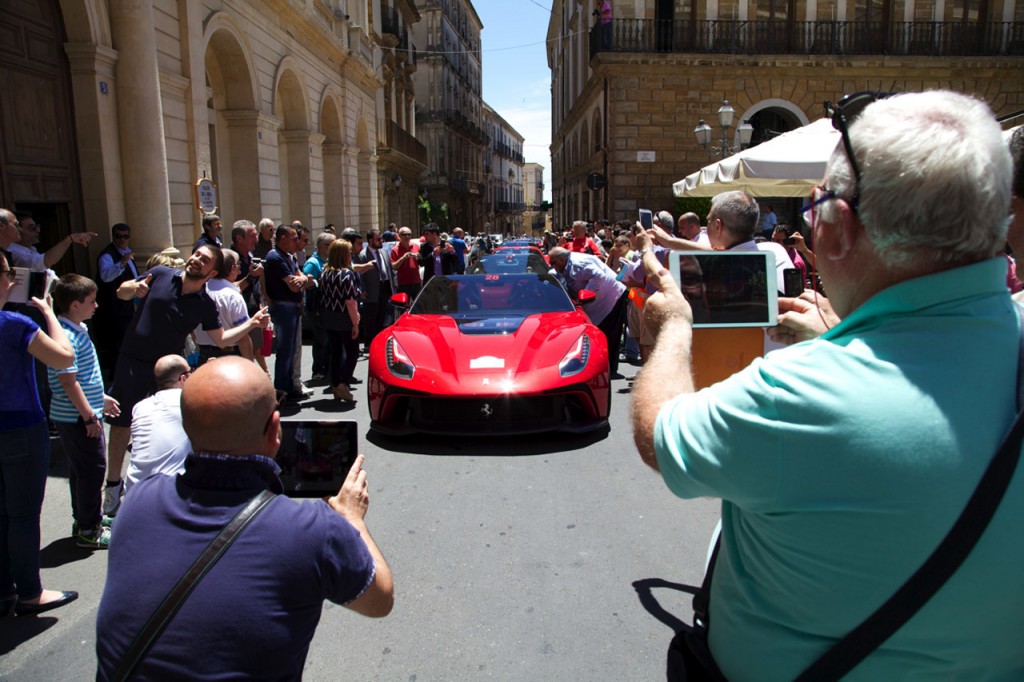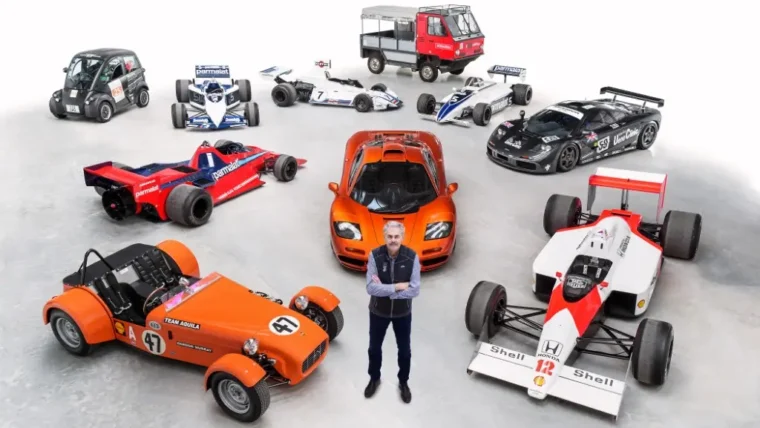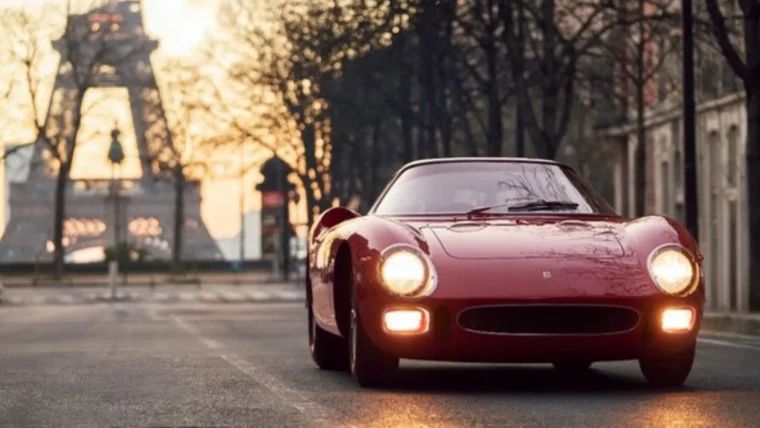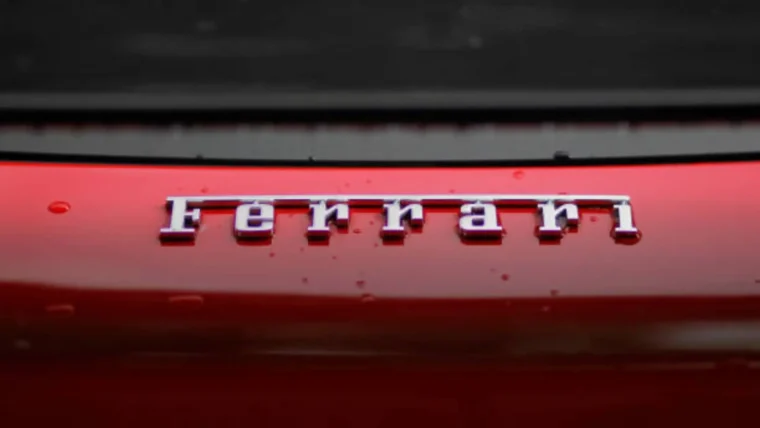Every year Ferrari owners gather from all over the world for the annual Ferrari Cavalcade. This year’s edition just wrapped up in Sicily, where over 90 owners from 27 different countries brought their prides and joys. The Ferrari extravaganza included the reveal of one very unique car called the F12 TRS.
Based on the F12berlinetta, the car was developed at a client’s request as an extreme, two-seater, open-top sports barchetta. One of the initial inspirations for the project was the 1957 250 Testa Rossa. In fact, the F12 TRS is Flavio Manzoni and the Ferrari Style Centre team’s modern, innovative take on that legendary car’s spirit and pays homage to it in its moniker.
The F12 TRS has the same performance figures as the F12berlinetta including 0-100 km/h acceleration in 3.1 s and 0-200 km/h acceleration in 8.1 s, thanks to the massive 730hp and maximum torque of 690 Nm at 9,000 rpm unleashed by its 6.3-litre V12 engine.
As for the design, from the leading edge of the typically sharp Ferrari nose, aggressively sculpted forms flow back over the hood, while a low, wraparound windscreen forms a long dark band of glass in contrast to the car’s body. The engine’s signature red cylinder heads are visible through a window in the hood, while the aerobridge that normally sits above the rear fender on the F12 Berlinetta has been modified, allowing for the open-top design of the car.
The design of the rear marks an evolution of the T-shaped graphic that characterises the F12’s truncated tail and is influenced to some extent by the cabin shape with long fuselage fairings running behind the headrests into the rear spoiler. A smooth ramp runs from the central tunnel too, linking interior and exterior and creating a longitudinal aerodynamic channel to deliver an innovative Venturi effect completed by a vent under the spoiler.
Inside, some of the controls like the air conditioning, for instance, have been cut back, while the glove compartment, central air vents, mats, audio system, window controls and odds-and-ends holders have all been removed. Most of the materials used aboard, such as black matt carbon-fibre, leather and Alcantara, are technical, while the same multi-layer red paint developed specifically for the exterior adorns the central tunnel and the door panels.
Other posts by AF Newsdesk

